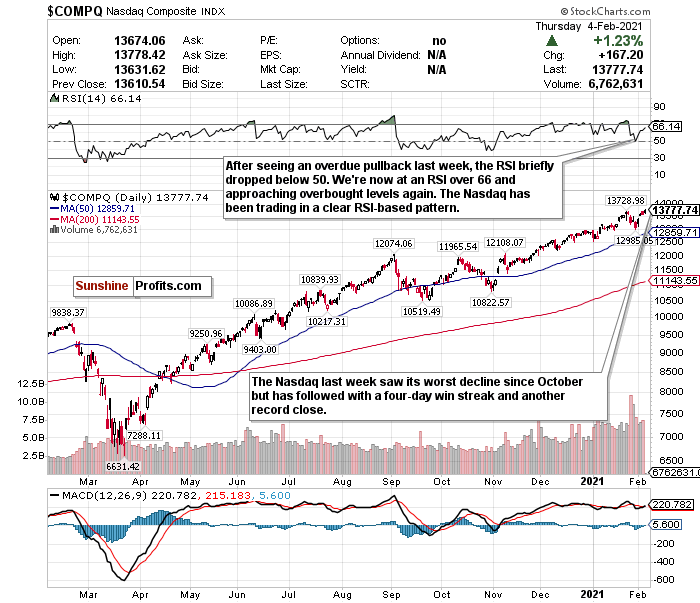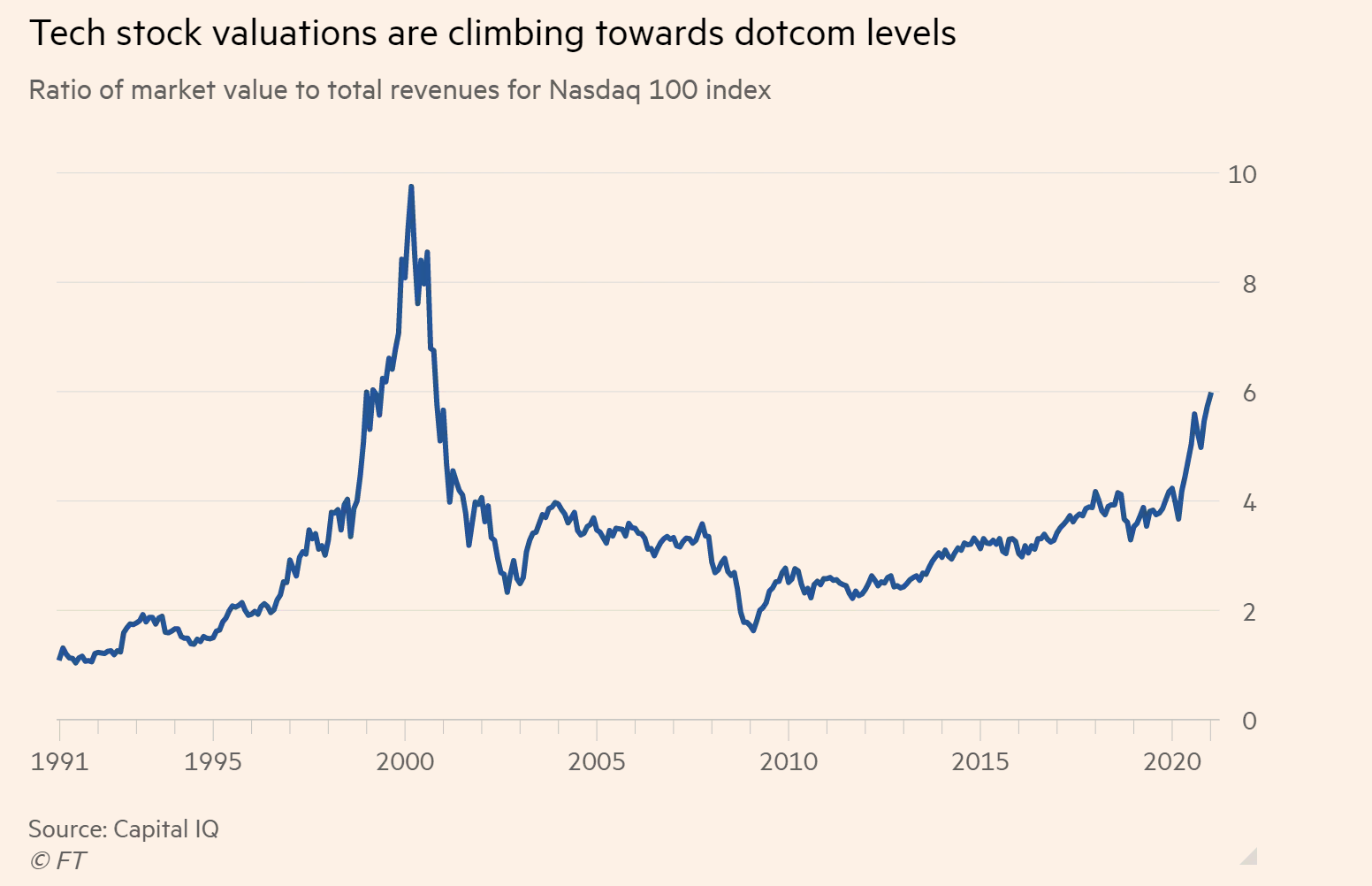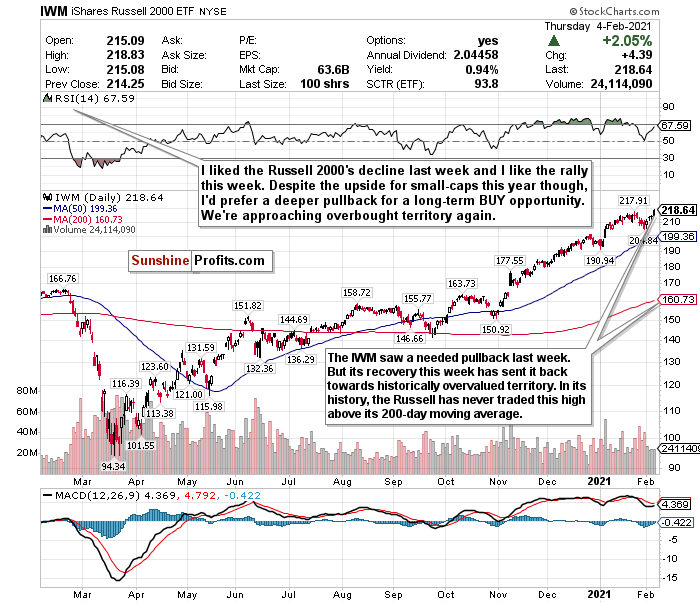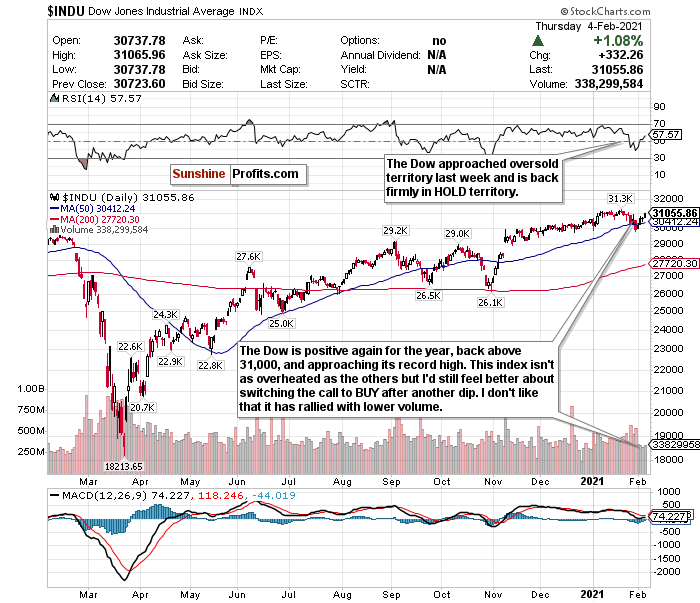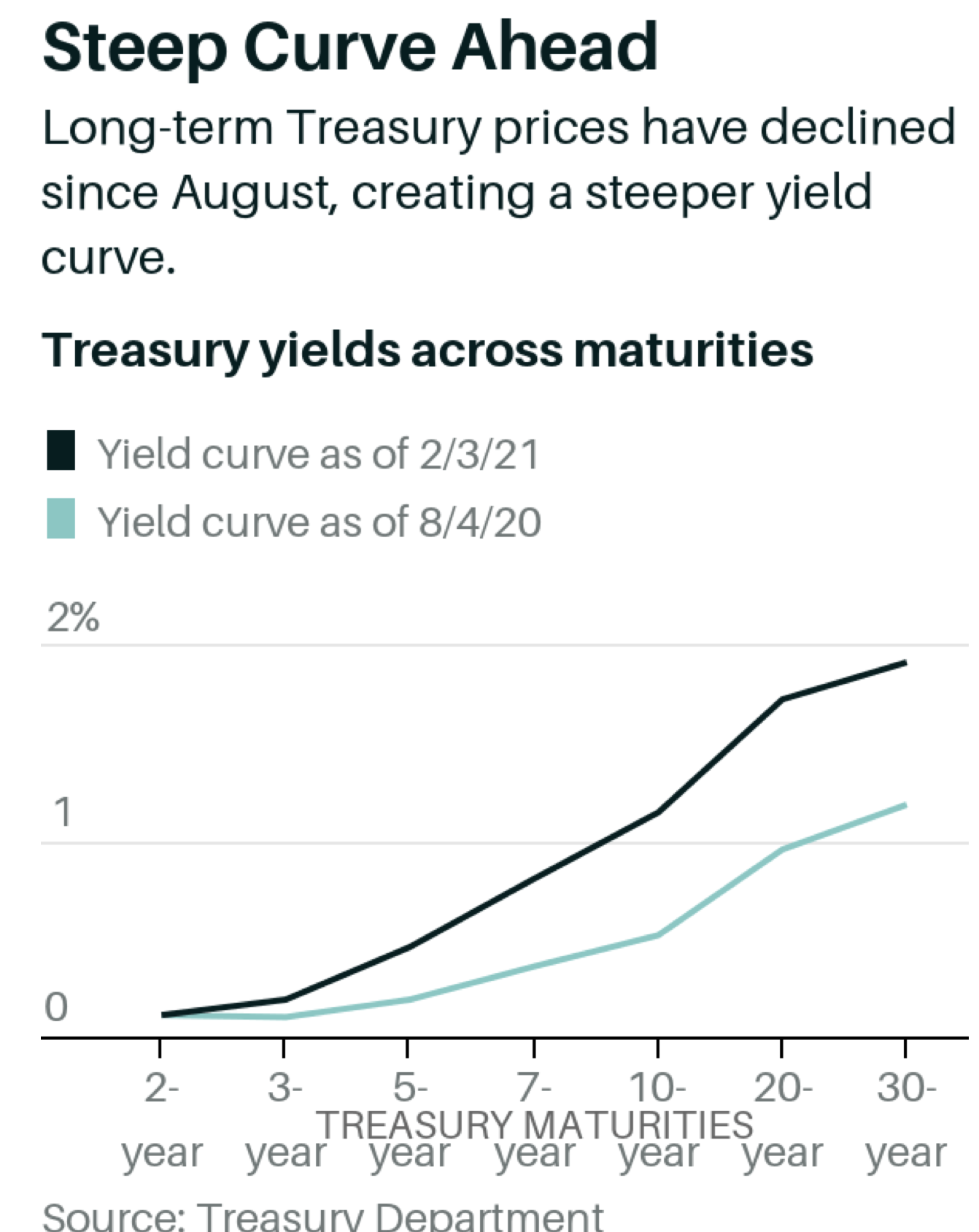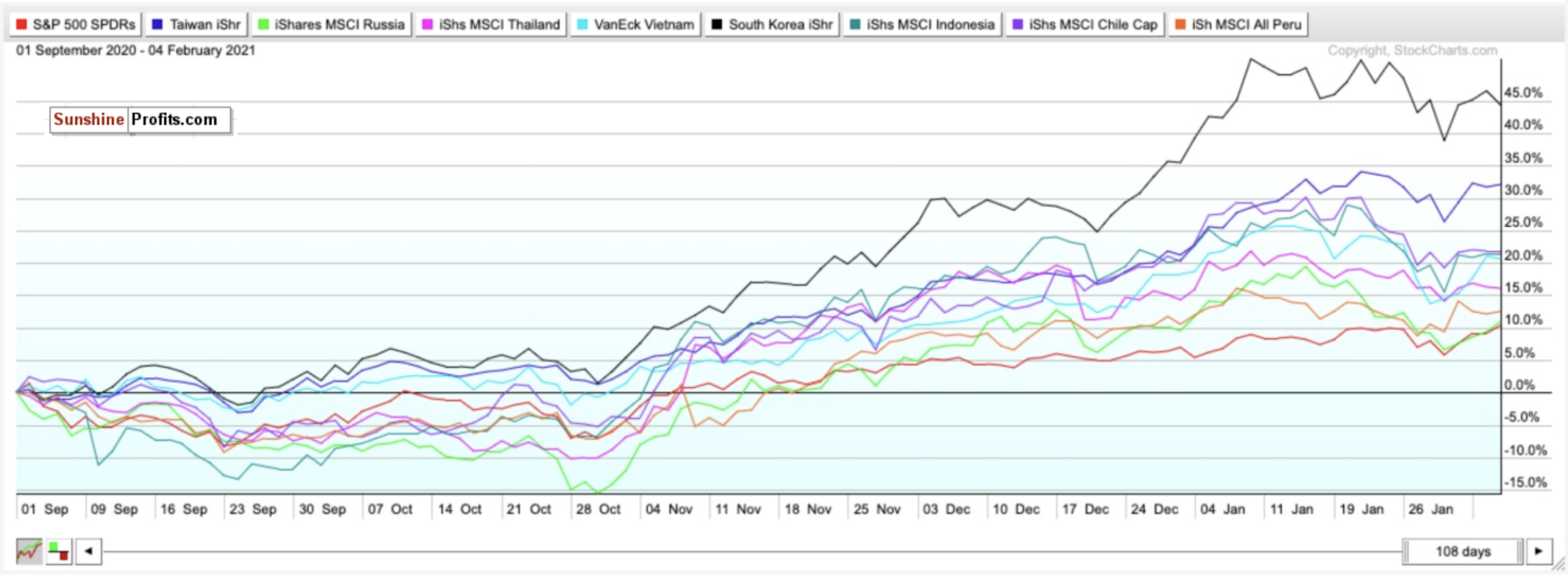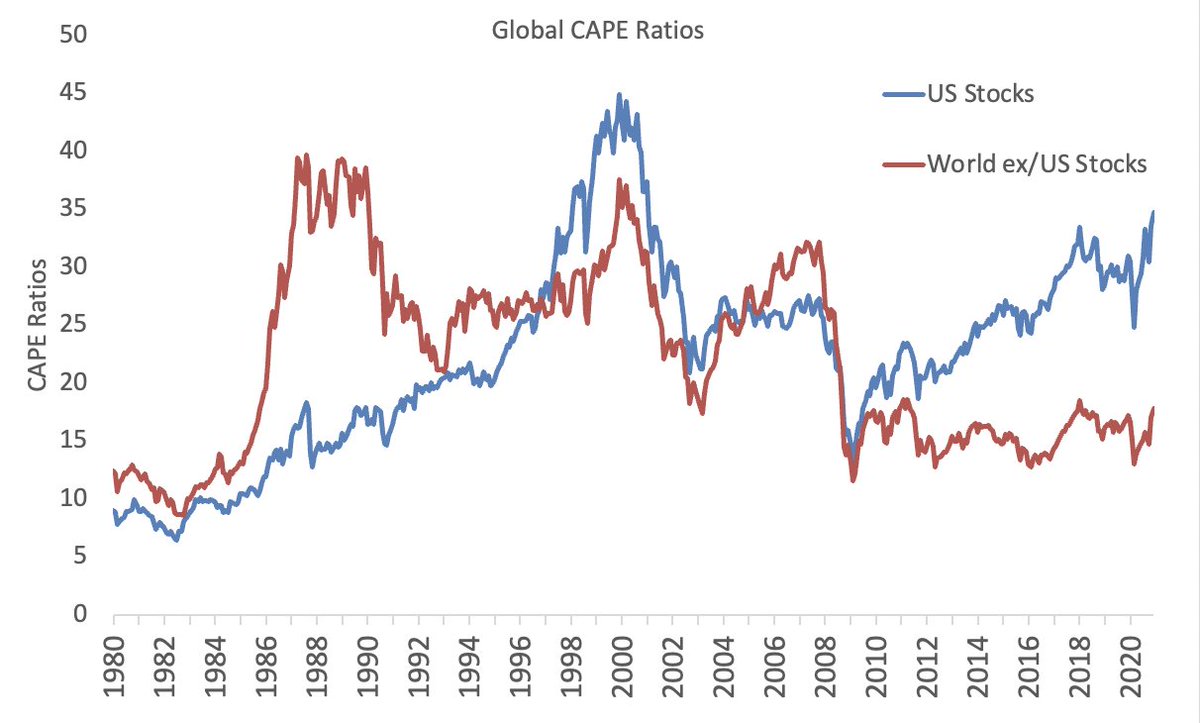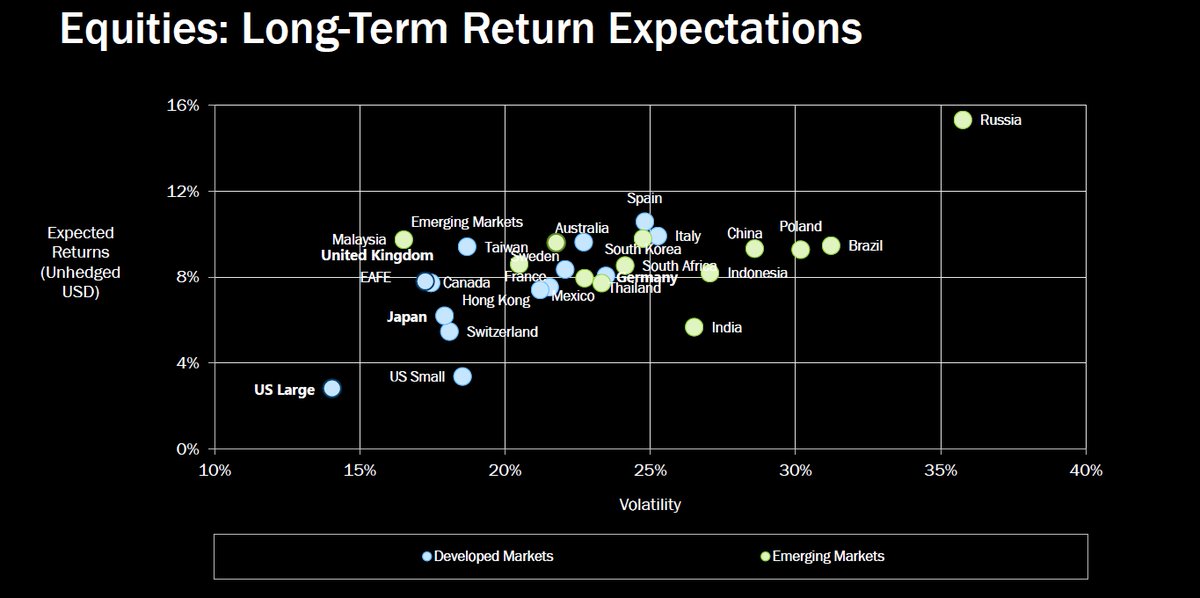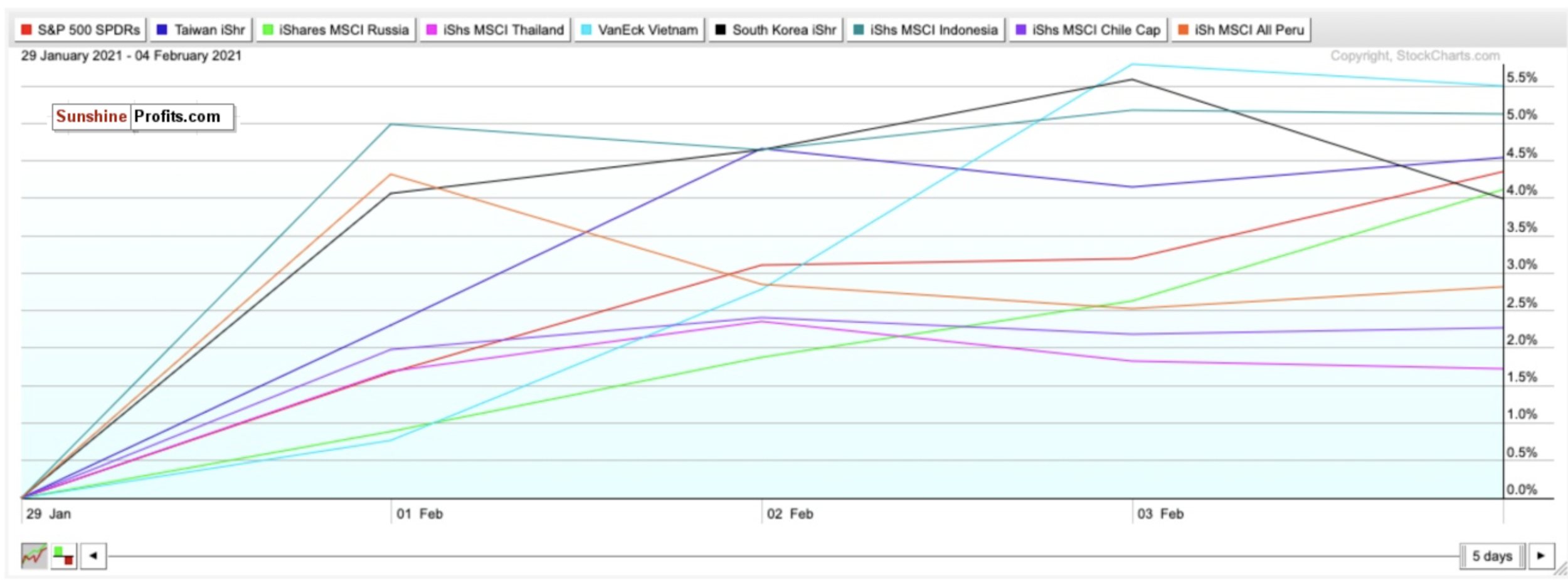Is this week, dare I say, the first "normal" week of 2021? Let’s take a look at what has happened in January so far in what is supposed to be a more prosperous year than 2020.
Six days into 2021, the Capitol saw its first insurrection since 1814.
Two weeks later, we inaugurated a new president.
A week later, we saw class warfare before our eyes when Redditors from the "WallStreetBets" subreddit took on hedge funds and won.
After declining in two of the last four weeks, the indices haven't seen a single down day all week. If Friday (Feb. 5) futures stay the same, we might not have a down day all week.
Bulls on parade.
Good morning investors, thanks for finally caring about strong earnings and not paying attention to GameStop (GME) (that was fun while it lasted, though).
The sentiment is rosey and for good reason. Earnings continue to crush. Some form of President Biden’s aggressive stimulus could also pass within days. Jobless claims fell for the third consecutive week and hit the lowest level since the end of November, labor market data looks strong, vaccines hit a record daily total on Thursday (Feb. 4) and could be distributed at CVS and Walgreens within days, and the 5-to-30 year treasury curve was the highest its been since March 2016.
Johnson & Johnson (JNJ) also just applied to the FDA for emergency use authorization for its one-dose vaccine. If approved, it could be game-changing.
Happy days.
My overheating and trading concerns in an overbought market remain, though, and have returned with a vengeance. I liked where many sectors and indices ended last week for potential BUY opportunities. This blazing win streak, though, is teetering on the edge of mania and overvaluation again.
The S&P 500, Nasdaq, and Russell 2000 hit new record closes yet again.
Are we in a bubble? Maybe.
I worry about complacency and overvaluation.
The S&P 500’s forward 12-month P/E ratio is back to nearly 22 and well above the 10-year average of 15.8. The Russell 2000 is also back at a historic high above its 200-day moving average. Tech stock valuations are even approaching dot-com bust levels, once again.
According to a recent Bank of America survey of 194 money managers, bullishness on stocks is at a three-year high, and the average share of cash in portfolios, which is usually a sign of protection from market turmoil, is at the lowest level since May 2013.
The market needed last week’s pullback, but it was nothing but a minor cooldown period thanks to Reddit in the grand scheme of things.
We are long overdue for a correction. Corrections are healthy for markets and more common than most realize. Only twice in the last 38 years have we had years WITHOUT a correction (1995 and 2017).
Well, hello, we haven’t seen one since last March!
A correction could also be an excellent buying opportunity for what should be a great second half of the year.
My goal for these updates is to educate you, give you ideas, and help you manage money like I did when I was pressing the buy and sell buttons for $600+ million in assets. I left that career to pursue one where I could help people who needed help, instead of the ultra-high net worth.
With that said, to sum it up:
While there is long-term optimism, there are short-term concerns. A short-term correction between now and the end of Q1 2021 is possible. I don't think that a decline above ~20%, leading to a bear market will happen.
Hopefully, you find my insights enlightening. I welcome your thoughts and questions and wish you the best of luck.
How Frothy is Tech Again?
Figure 1- Nasdaq Composite Index $COMP
The Nasdaq is back at a record high and continues to show strength. Earnings continue to crush estimates with stocks like Amazon, Alphabet, PayPal, and eBay clobbering estimates this week.
I remain bullish on earnings and tech sectors such as cloud computing, e-commerce, and fintech for 2021, but please monitor the RSI.
There are still echoes of the dot-com bubble 20-years ago, and the index has been trading in a clear RSI-based pattern.
The RSI is how I have called the Nasdaq since December. While an overbought or oversold RSI does not automatically mean a trend reversal, it has with the Nasdaq.
The Nasdaq pulled back on December 9 after exceeding an RSI of 70 and briefly pulled back again after passing 70 again around Christmas time. We also exceeded a 70 RSI just before the new year, and what happened on the first trading day of 2021? A decline of 1.47%.
I changed my Nasdaq call from a HOLD to a SELL on January 11 after the RSI exceeded 70, and the Nasdaq declined again by 1.45%.
Before the Nasdaq exceeded an RSI over 73 before January 25, I switched my call back to SELL, and the QQQ promptly declined 4.13% for the week.
The Nasdaq is trading in a precise pattern.
The RSI is at around 66 so I’m not ready to switch my call again. But I am a bit concerned. Tech valuations, especially the tech IPO market, terrify me. SPACs don’t help either.
The ratio of market value to total revenues has also not been this high since the dotcom bust.
I still like tech and am bullish for 2021. But for now, I'm going to stay conservative and say HOLD while monitoring the RSI.
For an ETF that attempts to directly correlate with the performance of the NASDAQ, the Invesco QQQ ETF (QQQ) is a good option.
What’s Next for Small-Caps?
Figure 2- iShares Russell 2000 ETF (IWM)
The Russell 2000 small-cap index, as tracked by the iShares Russell 2000 ETF (IWM), declined over 4.3% last week.
However, since the close on January 29, the index has led all other major indices, and gained over 6.35%. It’s also up over 13% year-to-date and outperforming the larger indices.
Small-caps are funny. They either outperform and underperform and are easily swayed by the news. While I foresaw last week’s decline coming for over a month now, I remain bullish due to aggressive stimulus and President Biden’s policies.
Although it is no longer technically overbought, I still think that it could use another pullback just because of how much it’s overheated since October 30. It’s up over 43% since then!
I love small-cap stocks for the long-term, especially as the world reopens and the Biden agenda eventually passes an aggressive stimulus package.
I’d like to see another sharp decline, though, before calling this a BUY. The index is approaching overbought territory again, and has never traded this high above its 200-day moving average.
HOLD, but if there is a deeper pullback, BUY for the long-term recovery.
The Dow Has Momentum on Its Side Again
Figure 3- Dow Jones Industrial Average $INDU
The Dow has lagged behind the other indices thus far in 2021, and before recovering this week, was firmly negative for the year.
After its downturn last week, the Dow was by far the index closest to oversold and BUY territory. It saw a decline in 6 of 7 days and briefly saw its RSI plummet to a sub-40 level.
It has seen significantly more momentum this week, however. It’s recovered all of its losses from the last two weeks and is back in positive territory for the year.
I love the Dow for its value compared to the other indices. It’s relatively undervalued compared to the S&P, Nasdaq, and Russell, and has a similar type of long-term upside for 2021.
If you want to start initiating positions, go ahead. It’s at a solid entry point, especially considering that many analysts call for it to end the year at 35,000.
From my end, though, I still have some short-term questions and concerns and feel like the Dow could see another pullback.
My call on the Dow stays a HOLD, but this could change soon.
For an ETF that looks to directly correlate with the Dow's performance, the SPDR Dow Jones ETF (DIA) is a strong option.
Beware of Inflation
The President of the Federal Reserve Bank of Kansas City, Esther George, just Thursday (Feb. 4) told Bloomberg News that the Fed was still “far away” from achieving its goals, and that it was too soon to discuss scaling back its unprecedented massive bond-buying program.
Pay very close attention to the possible return of inflation by mid-Q2 or Q3.
George’s statement confirms that the Fed will allow the GDP to heat up and possibly overshoot in the medium-term. An aggressive stimulus looks to be imminent as well, with the Senate approving a COVID relief budget.
We will see what happens to GDP growth by the end of Q1 2021, but I no longer think it will sputter as much as I previously thought.
If at all.
Jobless claims continue to fall and beat estimates, and the most recent Department of Labor Report indicated that we could very well be on the road to recovery.
Pay close attention to what happens to the price of milk by Q2 and Q3 once vaccines begin to roll out on a massive scale. I’m not opposed to hiking the minimum wage, but when you keep printing money, hold interest rates this low, and let the GDP heat up unchecked, inflation will inevitably return.
The steeping of the yield curve reflects this too, and is the steepest it’s been in years. Long-term Treasury yields have risen faster than shorter-term yields, and could be a sign that Wall Street is betting on a speedier economic recovery compounded by inflation.
The 10-year breakeven rate reflects inflation risk as well.
If you are looking to the future to hedge against inflation, look into TIPS, commodities, gold, and potentially some REITs.
In the mid-term, I have BUY calls on the SPDR TIPS ETF (SPIP), the Invesco Optimum Yield Diversified Commodity Strategy No K-1 ETF (PDBC), and the iShares Cohen & Steers REIT ETF (ICF).
Mid-Term/Long-Term
Taiwan, South Korea, and More for Best Emerging Market Exposure
Figure 4- SPY, EWT, ERUS, THD, VNM, EWY, EIDO, ECH, EPU comparison chart- Sep. 1, 2020-Present
Please take a look at the CAPE ratio of U.S. markets compared to the rest of the world. The CAPE ratio takes real earnings per share (EPS) over ten years and smooths out fluctuations in corporate profits that can always occur throughout different business cycles. It’s also known as the Shiller P/E ratio.
Despite the dollar’s rise of 1% year-to-date and rallying in four of the past five weeks, most analysts are bearish on the greenback and believe the rally is fool’s gold- just as I’ve been calling for weeks. 85%, or 63 of 73 analysts responding to a Reuters poll, expect the dollar to stay around current levels or decline over the next three months.
A surge in commodity prices due to the dollar’s imminent decline and shifting demographics could send emerging markets upwards too.
PWC also believes that emerging markets (E7) could grow around twice as fast as advanced economies (G7) on average in the coming decades.
For 2021, the following are my BUYs for emerging markets and why:
iShares MSCI Taiwan ETF (EWT)- Developing country, with stable fundamentals, diverse and modern hi-tech economy, regional upside without China’s same geopolitical risks.
iShares MSCI Thailand ETF (THD)- Bloomberg’s top emerging market pick for 2021 thanks to abundant reserves and a high potential for portfolio inflows. Undervalued compared to other ETFs.
iShares MSCI Russia Capped ETF (ERUS)- Bloomberg’s second choice for the top emerging market in 2021 thanks to robust external accounts, a robust fiscal profile, and an undervalued currency. Red-hot commodity market (a big deal for a declining dollar), growing hi-tech and software market, increasing personal incomes. Compared to many other developed and emerging markets, Russia could have more than a 35% upside for its equities in the long-term as well.
VanEck Vectors Vietnam ETF Vietnam (VNM)-Turned itself into an economy with a stable credit rating, strong exports, and modest public debt relative to growth rates. PWC believes Vietnam could also be the fastest-growing economy globally. It could be a Top 20 economy by 2050.
iShares MSCI South Korea ETF (EWY)- South Korea has a booming economy, robust exports, and stable yet high growth potential. The ETF has been the top-performing emerging market ETF since March 23.
iShares MSCI Indonesia ETF (EIDO)- Largest economy in Southeast Asia with young demographics. The fourth most populous country in the world. It could be less risky than other emerging markets while simultaneously growing fast. It could also be a Top 5 economy by 2050.
iShares MSCI Chile ETF (ECH)- One of South America’s largest and most prosperous economies. An abundance of natural resources and minerals. World’s largest exporter of copper. Could boom thanks to electric vehicles and batteries because of lithium demand. It is the world’s largest lithium exporter and could have 25% of the world’s reserves.
iShares MSCI Peru ETF (EPU)- A smaller developing economy but has robust gold and copper reserves and rich mineral resources.
Since the close on January 29, Vietnam and Indonesia are the top performers. I precisely foresaw this happening with these ETFs because of their pullbacks last week.
While it has been one of the laggards year-to-date of all my emerging market calls, Indonesia was bound to have a reversal. It’s such a robust economy with a young and sizable population. Its growth potential is inevitable, and it’s more undervalued than other high growth Asian markets such as Taiwan and South Korea. It’s up over 5% this week after it declined over 5.7% for the month of January.
Earlier this week, I said to monitor Vietnam. It declined by nearly 7.15% last week primarily due to reimposed lockdown restrictions. Although it was still lagging behind my other emerging market picks in my mid-week newsletter, it has now pulled ahead as the top performer for this week, gaining over 5.3%.
The VNM is as good a BUY opportunity as there is for emerging markets. A recent CNBC report showed that Vietnam was likely the top-performing Asian economy in 2020- including China.
Vietnam shockingly did not see a single quarter of economic contraction, and government estimates showed that the Vietnamese economy grew 2.9% last year from a year ago, topping China’s forecast-beating 2.3% growth during the same period.
Outside of the aforementioned country-specific ETFs, you can also BUY the iShares MSCI Emerging Index Fund (EEM) for broad exposure to Emerging Markets.
Long-Term
There are some things to worry about in the short-term. But I’m convinced that the economic recovery and the progress made with administering the vaccines bodes well for stocks in the second half of 2021. We may be at the beginning of the end of the pandemic, but it could still be a bumpy ride there.
There does seem to be one consensus, though: 2021 could be a big year for stocks.
Small-caps, value stocks and cyclical stocks could significantly surge. I just have a much better feeling for them in the second half of the year. I think we could be another down week or two before entering a powerful buying opportunity for the second half of the year.
Summary
I am becoming increasingly optimistic for the second half of 2021 despite still amid a bumpy road there. Until we eradicate COVID-19, a battle between optimism and pessimism is inevitable.
But it’s getting better.
The crash and subsequent record-setting recovery we saw in 2020 is a generational occurrence. I can’t see it happening again in 2021. But as I said in the intro, I think a correction is inevitable due to complacency and overvaluation.
If there is a short-term downturn, though, take a breath, stay cool, and use it as a time to find buying opportunities. Do not get caught up in fear and most of all:
NEVER TRADE WITH EMOTIONS.
If you cautiously bought a little bit last week, you’re probably delighted this week. Even though it wasn’t a full-blown correction, it was indeed an excellent opportunity to rebalance and add exposure. That’s why I love down weeks—especially overdue ones.
Consider this too. Since markets bottomed on March 23rd, ETFs tracking the indices have seen returns like this: Russell 2000 (IWM) up 121.96%. Nasdaq (QQQ) up 94.71%. S&P 500 (SPY) up 75.42%. Dow Jones (DIA) up 69.18%.
In the long-term, markets always move higher and focus on the future rather than the present.
To sum up all our calls, I have a HOLD calls for:
- The iShares Russell 2000 ETF (IWM)
- the Invesco QQQ ETF (QQQ)
- the SPDR S&P ETF (SPY), and
- the SPDR Dow Jones ETF (DIA)
For all these ETFs, I am more bullish for all these ETFs in the long-term for the second half of 2021.
I recommend selling or hedging the US Dollar and gaining exposure into emerging markets for the mid-term and long-term.
I have BUY calls on:
- The iShares MSCI Emerging Index Fund (EEM),
- the iShares MSCI Taiwan ETF (EWT),
- the iShares MSCI Thailand ETF (THD),
- the iShares MSCI Russia ETF (ERUS),
- the VanEck Vectors Vietnam ETF Vietnam (VNM),
- the iShares MSCI South Korea ETF (EWY),
- the iShares MSCI Indonesia ETF (EIDO),
- the iShares MSCI Chile ETF (ECH),
- and the iShares MSCI Peru ETF (EPU)
Additionally, because I foresee inflation returning as early as mid to late 2021…
I also have BUY calls on:
- The SPDR TIPS ETF (SPIP),
- the Invesco Optimum Yield Diversified Commodity Strategy No K-1 ETF (PDBC), and
- the iShares Cohen & Steers REIT ETF (ICF)
Thank you.
Matthew Levy, CFA
Stock Trading Strategist


